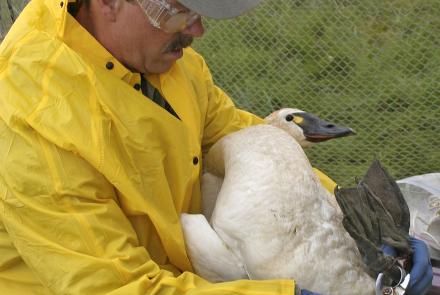Alaskans Double Their Daylight Savings
On April 7th, it's time to "spring forward" again. Time to pull the clock off the wall and watch a precious hour slip away as fast as you can turn the minute hand. We all know the ritual as daylight savings time, but in the most populated parts of Alaska it would be more appropriate to say we're going on "double daylight savings time."
That's what researchers such as Carl Benson, a Geophysical Institute professor emeritus, call it. At lower latitudes, daylight savings time brightens evenings by taking an hour of morning light and pasting it on the end of the day. This knocks Lower 48 communities an hour out of tune with the sun; the sun is highest in the sky at 1 p.m., instead of noon.
Most of Alaska gets a double dose of daylight savings. When we push our clocks ahead for the daylight savings time period---the first Sunday in April until the last Sunday in October---the sun reaches its zenith at about 2 p.m. in Fairbanks and Anchorage. Many scientists refer to this in summer field notes as double daylight savings time because noon is two hours from where it should be. The root of the sun-sync problem was a successful lobbying job by the Alaska delegation to Congress in 1983. That's the year when three of Alaska's four time zones--Yukon, Alaska, and Bering--were combined into one. About 99 percent of Alaska's population is now synchronized to Alaska time, except for those on the westernmost string of Aleutians west of Umnak Island; clocks there are set to Hawaii-Aleutian time.
With the time-zone trimming, Juneau time became Anchorage and Fairbanks time. Before 1983, when it was 5 p.m. in Fairbanks and Anchorage, it was 7 p.m. in Juneau (Southeast Alaska was put on Pacific Time during World War II to synchronize the state capital with San Francisco and Seattle).
While the time-zone adjustment made it less complicated to call a state senator, it defeated the historic purpose of time zones--to make noon as close as possible to when the sun is at its high point in the sky.
Before time zones were established in 1883, different U.S. cities adjusted their clocks to the sun, with chaotic results. When it was noon in Boston, for example, clocks in Atlanta displayed 11:06 a.m.
Expanding railroads magnified the problem. Travelers heading for a short trip west could arrive at a destination earlier than they departed, or so it seemed.
As a solution, the U.S. and Canada adopted an idea by Canadian engineer Sandford Fleming. Fleming divided the globe lengthwise into wedges, like a peeled orange. The 24 wedges each represented one hour and 15 degrees of longitude because it takes 24 hours for the earth to complete a 360-degree spin on its axis.
The wedges became time zones. To avoid population centers, planners drew boundaries as crooked as the path of a wandering ant.
Because of Alaska's size, the state straddled four time zones: Bering, Alaska, Yukon and an unnamed zone in the far western Aleutians. Alaska covers 57.5 degrees of longitude, almost exactly the same as the 57.6 degrees spanned between Maine and Washington.
When four Alaska time zones were transformed to two, noon didn't fit its definition in most of Alaska anymore. Daylight savings time puts the system further out of whack. In western Alaska towns such as Nome, solar noon comes at about 3 pm. after daylight savings time kicks in.
Daylight savings time was first used by the Germans in World War I to save energy. Brighter nights meant less coal was burned to light homes and businesses. The U.S., including Alaska, adopted daylight savings time in 1967. In 1972, Arizona, Hawaii, Puerto Rico and part of Indiana opted not to recognize it.
It's somewhat surprising that independent-minded Alaska hasn't followed suit. After all, we won't be burning much coal to power our lights on the sunny summer nights ahead.




